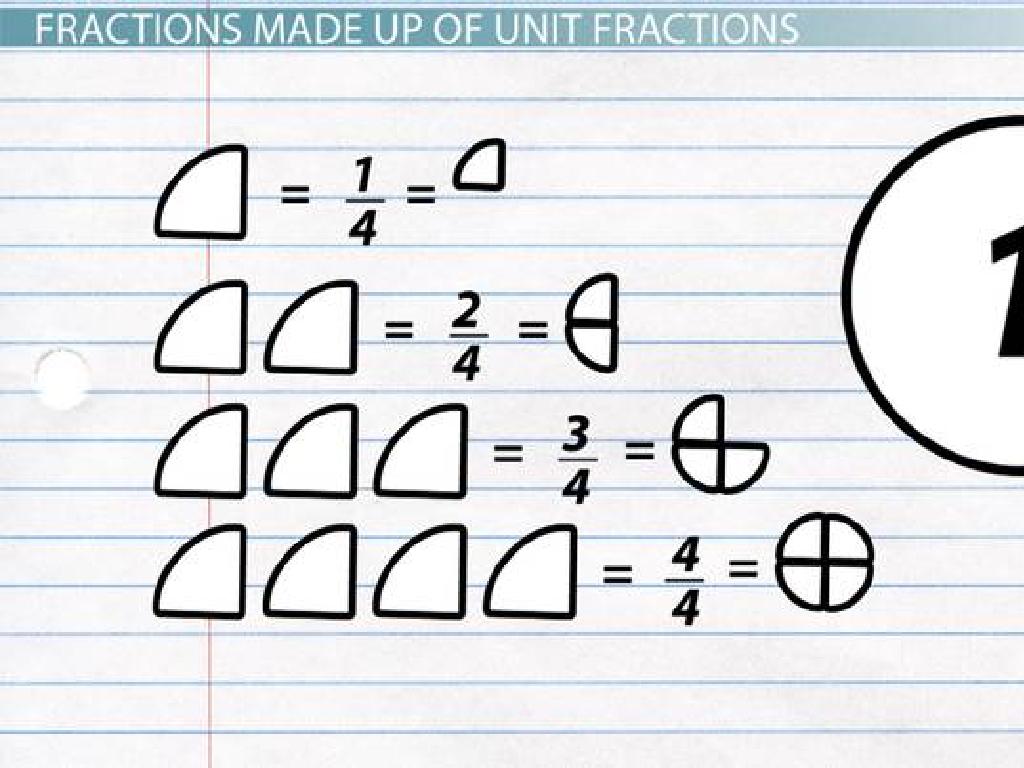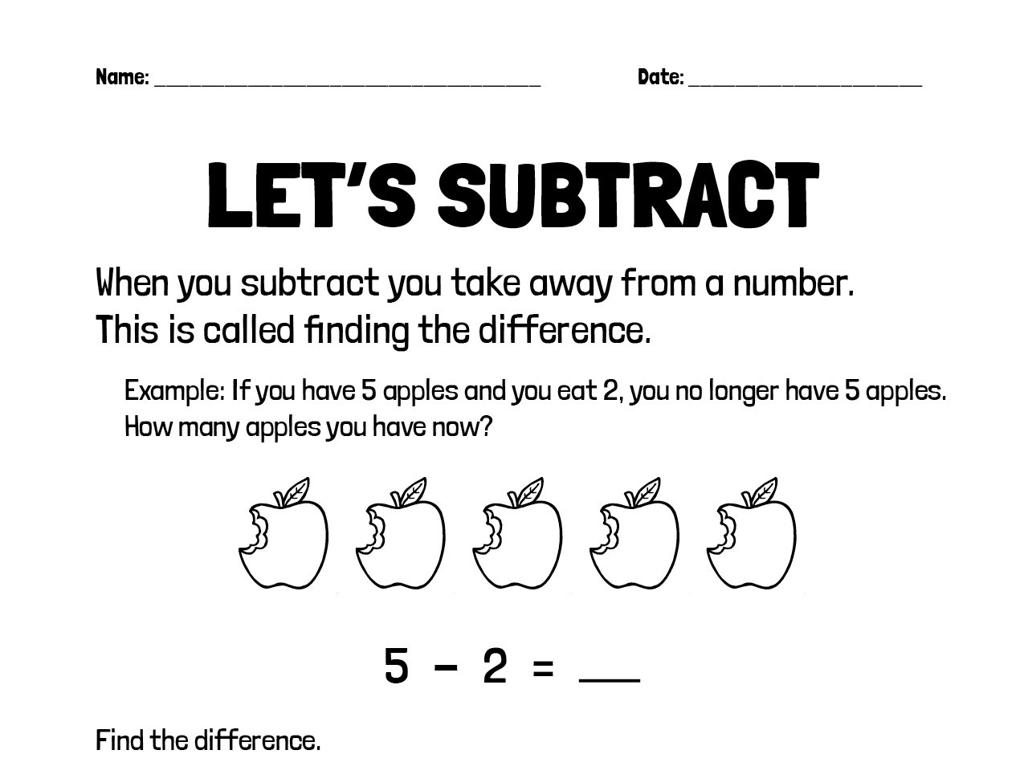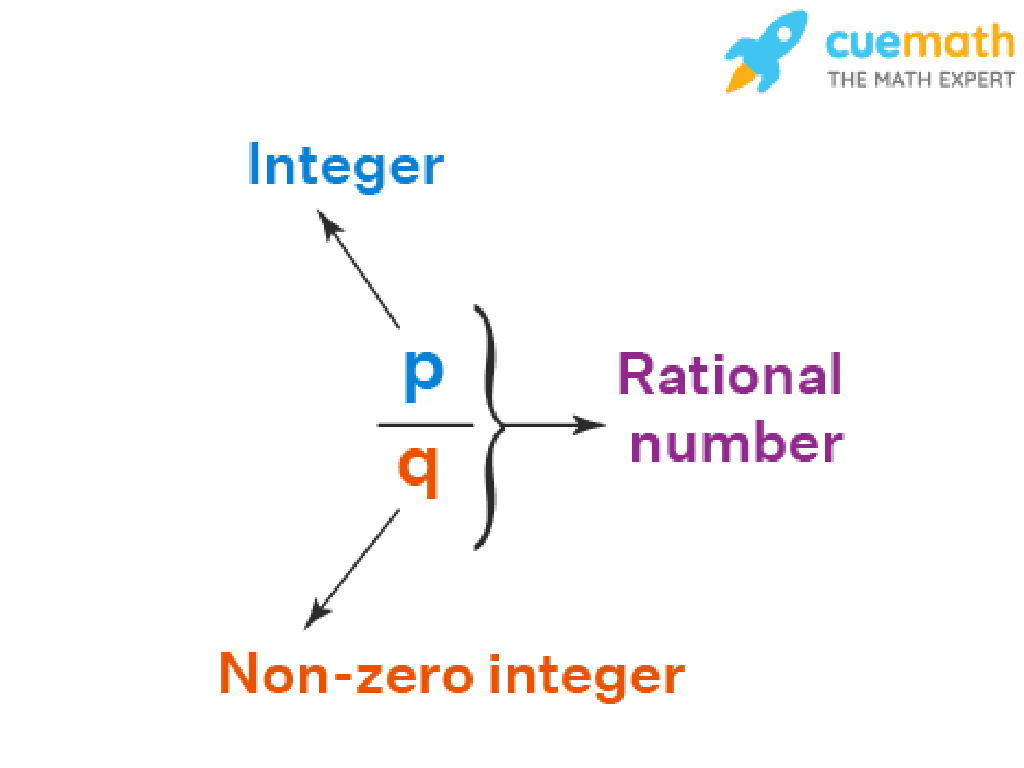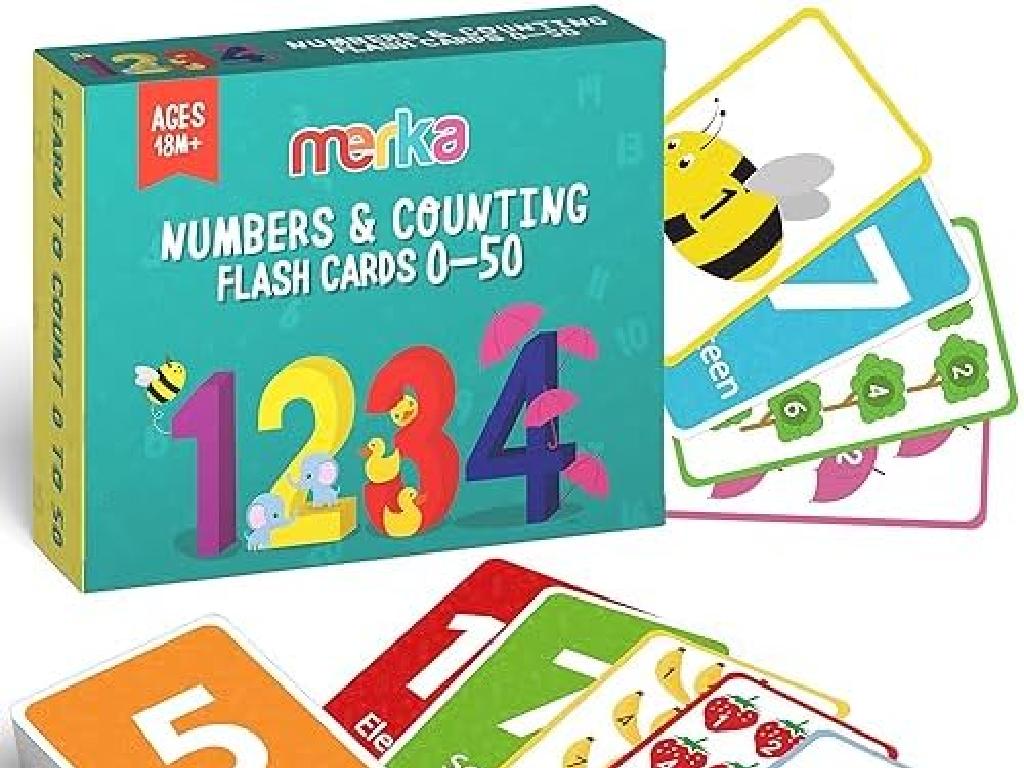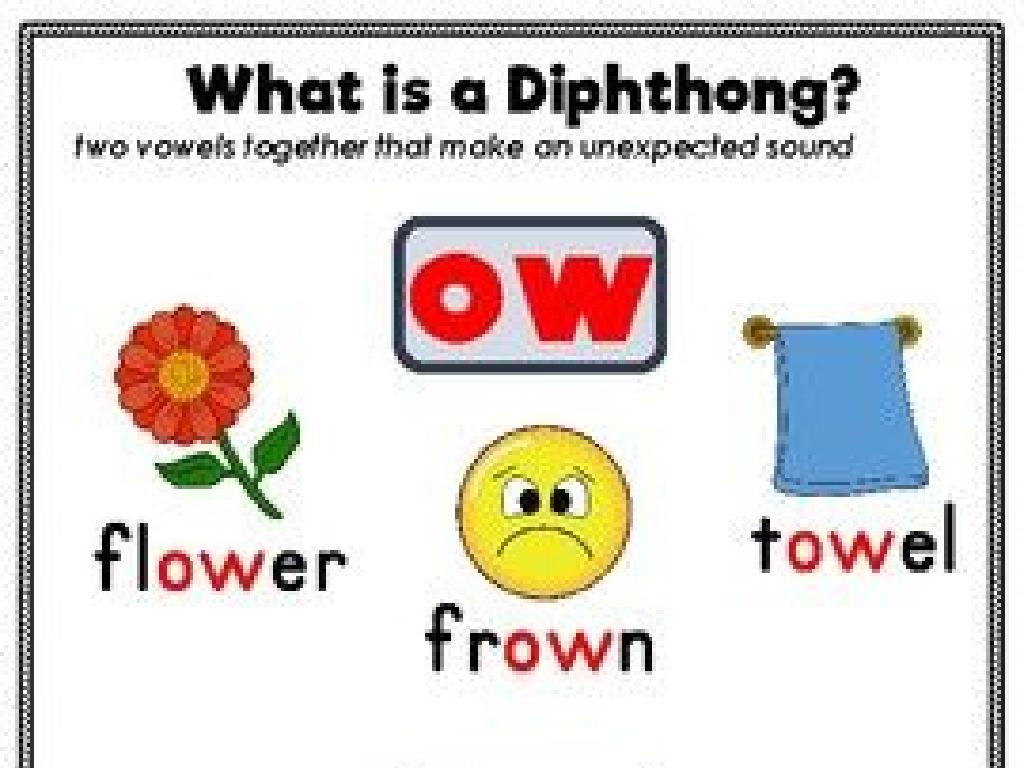Add Using Properties
Subject: Math
Grade: Fifth grade
Topic: Addition And Subtraction
Please LOG IN to download the presentation. Access is available to registered users only.
View More Content
Today’s Adventure: Add Using Properties!
– Explore basic addition concepts
– Addition combines two or more numbers into a total sum.
– Discover addition properties
– Commutative, Associative, and Identity properties.
– Learn why properties are useful
– Properties simplify calculations and solve problems faster.
– Apply properties to add efficiently
– Use properties to group numbers and make adding easier.
|
This slide introduces the fundamental concept of addition and its properties to fifth-grade students. Begin by explaining that addition is the process of combining numbers to find a total sum. Introduce the commutative property (changing the order doesn’t change the sum), associative property (changing the grouping doesn’t change the sum), and identity property (adding zero doesn’t change the number). Emphasize how understanding these properties can make addition easier and more efficient, especially with larger numbers. Provide examples to illustrate each property in action and encourage students to apply these properties in their calculations to develop a deeper understanding of addition.
Properties of Addition
– Understanding Properties
– Commutative Property
– Order doesn’t matter: 3 + 5 = 5 + 3
– Associative Property
– Grouping doesn’t change sum: (2 + 4) + 6 = 2 + (4 + 6)
– Identity Property
– Adding zero keeps identity: 7 + 0 = 7
|
This slide introduces the fundamental properties of addition that help simplify calculations and understand how numbers interact. Start by explaining what properties are in mathematics – rules that numbers follow. The Commutative Property shows that the order in which two numbers are added does not affect the sum. The Associative Property demonstrates that when three or more numbers are added, the way in which they are grouped does not affect the sum. The Identity Property states that adding zero to any number will not change the number, hence preserving its identity. Use examples to illustrate each property and encourage students to try out different numbers to see these properties in action.
Commutative Property of Addition
– Understanding Commutative Property
– It means you can switch numbers around and still get the same total.
– Switching numbers doesn’t change sum
– Example: 3 + 5 equals 5 + 3
– Demonstrates that 3 plus 5 is the same as 5 plus 3.
– Activity: Find commuting number pairs
– Look for pairs of numbers that give the same total when their order is switched.
|
The Commutative Property of Addition states that changing the order of the numbers we are adding does not change the sum. For example, 3 + 5 is the same as 5 + 3. This concept is fundamental in understanding addition and helps students realize that addition can be done in any order, which can simplify calculations. For the activity, encourage students to find their own pairs of numbers that ‘commute’ or switch places without changing the result. This can be a fun exercise where students can use objects or draw illustrations to visualize the property. Possible pairs include 2 + 4 and 4 + 2, 6 + 7 and 7 + 6, etc. This hands-on activity will help solidify their understanding of the commutative property.
Associative Property of Addition
– Associative Property explained
– When adding, how you group numbers does not change the sum
– Like grouping friends
– Example: (2 + 3) + 4 = 2 + (3 + 4)
– Demonstrates that the sum remains the same regardless of grouping
– Activity: Group & add numbers
– Find different number groups, add them, see if they equal!
|
The Associative Property shows that when adding, the way in which numbers are grouped does not affect the sum. It’s like deciding whether to first group two friends together and then adding another, or adding a friend to another pair; the total number of friends remains the same. Use the example (2 + 3) + 4 = 2 + (3 + 4) to illustrate this concept. For the activity, provide students with various sets of numbers to group and add in different ways, reinforcing the idea that the sum remains constant. This will help them understand the property practically and see its application in solving addition problems more flexibly.
The Identity Property of Addition
– Discovering the Identity Property
– Adding zero to any number
– Zero is the ‘do nothing’ number in addition
– Example: 7 + 0 = 7
– See how adding zero keeps the number the same
– Activity: Experiment with adding zero
– Try adding zero to various numbers and observe
|
The Identity Property of Addition states that any number plus zero equals the original number. This slide introduces the concept with a simple example, 7 + 0 = 7, to illustrate that adding zero does not change the value. For the activity, encourage students to add zero to different numbers, both small and large, to reinforce the concept that the sum remains unchanged. This will help them understand the ‘do nothing’ effect of zero in addition. The activity can be done with physical objects, number lines, or simple paper and pencil calculations. Possible variations include using a deck of cards, dice rolls, or digital tools to generate random numbers for addition.
Combining Properties for Efficient Addition
– Use properties to simplify addition
– Example: (4 + 0) + 5 = 4 + (0 + 5)
– Associative property allows us to regroup numbers
– Identify properties in the example
– Zero property of addition and associative property at work
– Simplify the expression using properties
– 4 + 0 simplifies to 4, then 4 + 5 equals 9
|
This slide aims to teach students how to combine the properties of addition to simplify expressions. The example provided demonstrates the associative property, which states that numbers can be grouped in any order without changing the sum. Additionally, the zero property of addition, which states that adding zero to a number does not change its value, is also applied. By understanding and applying these properties, students can learn to simplify addition problems more efficiently. Encourage students to practice with different numbers and to recognize these properties in various arithmetic problems.
Practice Time: Applying Addition Properties
– Solve problems using properties
– Use the Commutative Property
– Switch the order of numbers and see if it’s the same total
– Apply the Associative Property
– Group numbers differently to add in any order
– Share your solutions with the class
|
This slide is designed for a practice activity where students will apply the properties of addition they’ve learned. Encourage students to solve problems using the Commutative Property, which allows them to switch the order of numbers, and the Associative Property, which lets them group numbers differently. Remind them that these properties make addition easier and more flexible. After solving, students should be ready to share their answers with the class, fostering a collaborative learning environment. Provide several examples for the students to work through and be prepared to assist any student who may need extra help.
Class Activity: Property Puzzlers
– Work together in small groups
– Solve puzzles using math properties
– Look for associative, commutative properties
– Each puzzle focuses on a different property
– For example, associative or commutative property
– Present your group’s solutions
|
This activity is designed to encourage collaborative problem-solving and application of mathematical properties in a fun and interactive way. Divide the class into small groups and provide each group with a set of puzzles that require the use of different properties of addition, such as the associative property (e.g., (3 + 2) + 4 = 3 + (2 + 4)) or the commutative property (e.g., 4 + 5 = 5 + 4). Encourage the students to discuss and work through the puzzles together, emphasizing the importance of each property in simplifying and solving addition problems. After the groups have completed their puzzles, have each group present their solutions and the properties they used to the rest of the class. This will not only reinforce their understanding but also improve their communication and presentation skills.
Conclusion: Addition Properties
– Recap of addition properties
– Benefits of using properties
– Properties simplify complex problems
– Reflect on today’s learning
– Think about how properties helped you today
– Share your understanding
– Discuss what you’ve learned with the class
|
As we wrap up today’s lesson, we’ll revisit the addition properties we’ve learned, including the commutative, associative, and identity properties. Reflect on how these properties make addition easier and help us solve problems more efficiently. Encourage students to think about how their understanding of these properties has grown throughout the lesson. Finally, create a supportive environment for students to share their insights and what they’ve learned with their classmates, fostering a collaborative learning experience.

